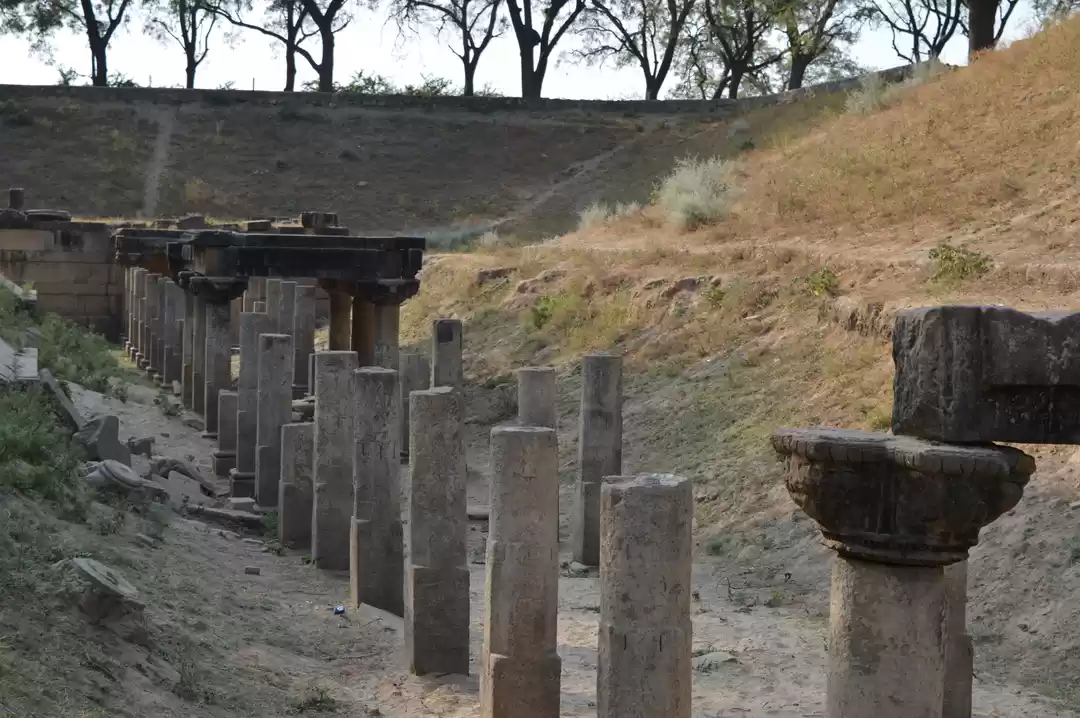
I keep thinking about India, and plenty of diversity that it has to offer. I often felt I've left some part of Gujarat unexplored, and that pinched me. It left me with an incomplete understanding, or you can say perspective. Well, case in point is Patan in Gujarat.
Coming to facts, it is a small district situated in North Gujarat. It is about 126 km away from Ahmedabad, and is home to a world heritage site called 'Rani Ki Vav'. Also, an enthusiast can get to see some excavated sites, monuments and Jain temples. The best way to reach Patan is to get a train/bus from Ahmedabad. It takes about 3.5 hours to reach Patan from Ahmedabad.
My friend and I thought of going for a weekend getaway to Patan, specifically to visit Rani Ki Vav. Over the years, I used to feel ignorant of myself not having visited a UNESCO World Heritage site in my vicinity. We reached Patan on a Saturday evening. Patan does not have too many options for stay and food, so Apple Residency hotel seemed like an ideal option. The hotel is located in a commercial area but is quite a decent hotel, very reasonably priced. The rooms were quite comfortable and clean, room service was quick. They have a restaurant too. Food over there is not worth dying for, but it will surely serve your purpose.
Patan is a small, not so tourist friendly town. We visited almost all places there, such as...
Patola Museum
Patan is famous for its Double Ikkat Patola. Very few people in the world know that the double ikkat Patola of Patan is a Geographical Indication. In the entire world, only one family has been practising this art for generations.
The young generation of this family is now spreading this awareness to modern world. They are showcasing the entire process of Patola weaving, the family history and ikkat art from all over the world in their museum, which is also their workplace. It was a pleasure seeing how down to earth the family members were and interacted with all guests, showed them around.
A single patola saree takes around 6 months for completion, and is priced at Rs. 1.5 lakh and above. They even have stoles, dupattas, handkerchiefs etc. for sale. If you are an enthusiastic shopper or looking for a souvenir, stoles are a good buy.
We also saw a glimpse of paper carving work in the same place, more on that in an upcoming post.
Sahastralinga Tank
Sahastralinga Tank is an excavated water harvest system that was connected to the river Saraswati. The first day we went there in the evening, welcomed by tons of Monkeys. We could see an excavated structure and a water tank. Something like this:
This slideshow requires JavaScript.
We were puzzled and intrigued about the logic behind such a structure, so we read about it. Come the next day, we came back and found that it was much much bigger than what we'd actually seen. It had some excavated water channels too, on the other side. And 'Sahastralinga' means 1000 Shivlings, which existed once upon a time. Now what we can see is the remains of a few. It is said that this was built around 1000 AD.
Purely, history enthusiasts stuff. You'll only like the garden if you don't enjoy history and stories.
This was the highlight of the trip! We had decided to spend enough time here, explore this place from every angle, and find every historical perspective possible. Rani Ki Vav was built by Rani Udaymati during 1000 AD. It took about 11 years to build the step well. It is a 64 m deep, 27 m Wide stepwell. It is a 7 storey well.
We passed by this place the previous evening and were wondering where the vav is! A vav means a step well, which is technically inside a basement. In the words of my guide, Rani ki vav is a 'Nandi' type of vav, which means it has a single entry and exit gate.
We reached Rani Ki Vav at its opening time, 8:30 am. It is taken care of by Archaeological Survey of India, so quite well maintained. It is a step well surrounded by a large garden. As you walk through the garden, you see that magnificent structure with lots of sculptures.
The sculptures are so intricate and well polished (yes, these are old structures) adorning Agnideva, avatars of Shiva, Vishnu, Brahma, Kal Bhairav, Ganesha, Parvati and plenty of other Hindu Gods and Goddesses. It is logically placed according to vaastu, and sequentially placed.
The construction is done in such a way that rain water as well as spring water was collected in the well. No pumping was required, people could climb the stairs down and get water easily. This is also an earthquake-proof structure. The step well is entirely made of sandstone with an interlocking system. The pillars also adorn various arches and structures. It was a delight to our eyes. The pictures will surely say more.
This slideshow requires JavaScript.
Patan Museum
Just situated beside Rani Ki Vav, it exhibits many excavated stones ruins of the olden times. It also provides some basic information about Patan, which was the capital of Gujarat during the 11th Century. This can be skipped during your Patan visit.
Patan Museum was the last destination of our trip. We grabbed a quick-lunch and headed back to Ahmedabad.
If you love visiting monuments and learning about the history of a place, Patan is not worth missing. There were times when we got stuck without a transport and somehow figured out one, but that's a part and parcel of an adventure trip. Also, sometimes you are the only traveller enjoying the beauty amidst farms and forests, on a sunny day. This will NOT be a pleasure trip for sure. Nevertheless, it will be fun.
People don't take trips, trips take people -John Steinbeck




















